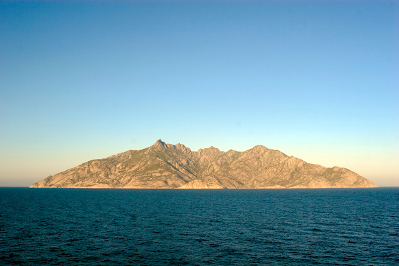Le Comte de Monte-Cristo (The Count of Monte Cristo) was published in serial fashion in the Journal des Débats starting in 1844 and was published in book form in 1846. Dumas cunningly devised the ending of each chapter so the readers would wait captivated, in expectation of what would happen next week in the adventures.
The Count of Monte Cristo – First English edition, 1846
The Count of Monte Cristo was translated into all modern languages and has never been out of print. More than thirty films have appeared based on it. Two may be mentioned, the first starring Richard Chamberlain in 1975 is fairly faithful to the book (1h 41m):
https://www.youtube.com/watch?app=desktop&v=TUCk9jK-xsU
Richard Chamberlain as The Count of Monte Cristo and Kate Nelligan as Mercédès in the 1975 film.
The second is much longer version which appeared on TV in France as a series, featuring the formidable French actor, Gérard Depardieu starring in a 6-hour version of the unabridged novel in French with English subtitles :
https://m.youtube.com/watch?v=rnAWw7MAN3U
Gérard Depardieu as Edmond Dantès and Ornella Muti as Mercédès in the French TV mini-series.
The particular abridged translation chosen was a great success, both for its prose style, and it’s hewing to the essential storyline without distractions.
The Count of Monte Cristo (abridged), cover of the Château d'If, the prison where Edmond Dantès was held captive – with an Introduction by Luc Sante.
The prison is situated on the Île d’If, which is a tiny island, only three kilometres from mainland France, west of the old port of Marseille. The entire island is heavily fortified; high ramparts with gun platforms surmount the cliffs, which rise steeply from the surrounding ocean. It was built in 1524-31 on the orders of King Francis 1, apparently to defend the coastline from sea-based attacks. The isolated location and dangerous offshore currents of the château made it an ideal escape proof prison much like the island of Alcatraz in modern USA. Its use as a dumping ground for political and religious detainees soon made it one of the most feared and notorious jails in France. Over 3500 Huguenots, i.e. Protestant Christians were sent to Château d’If. This novel has made it internationally famous since 1844. Dantès makes a daring escape from the castle. In reality, no inmate is known to have made it out of the prison. The modern Château d’If maintains a roughly hewn dungeon in honour of Dantes, as a tourist attraction.As was common practice in those days prisoners were treated differently according to their class and wealth. The poorest were placed at the bottom, up to twenty or more per cell. The wealthiest were able to pay for their own private cells higher up, with windows and a fireplace.
It is evident why this novel remains a best-seller in its many translations after almost 200 years: it provides adventure, a gripping storyline, and a great variety of characters and scenes from different regions of Europe with the local flavour imparted well. Something dramatic is always happening. It has all the ingredients for success: a mysterious hero with superhuman powers; and portrayals of jealousy, cupidity, love, and revenge.
The reader will find many passages that are worthy of attentive reading, all inspired by the grand style of Alexandre Dumas; some filled with pathos, some menacing, others full of swashbuckling braggadocio, still others soft and romancing. Some of the relationships border on adoration, impossible to find in contemporary humans with their egalitarian outlook.
The friends we have lost do not repose under the ground; they are buried deep in our hearts.
The original French is more poetic:
... les amis que nous avons perdus ne reposent pas dans la terre, ils sont ensevelis dans notre cœur ...
Which deserves an appropriate couplet in English:
They do not lie in grassy parks.





,%20cover%20of%20the%20Cha%CC%82teau%20d'If,%20the%20prison%20where%20Edmond%20Dante%CC%80s%20was%20held%20captive%20%E2%80%93%20with%20an%20Introduction%20Luc%20Sante.png)


